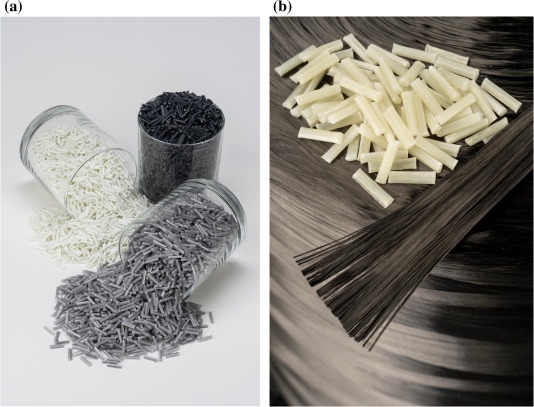Long Fiber Thermoplastics: Advancements in Injection Moulding
Long Fiber Thermoplastics (LFTs) are a gamechanger in the materials world, offering a compelling mix of strength, lightweight properties, and flexibility. These composites are formed by reinforcing thermoplastics with long fibers, usually glass or carbon, which significantly enhance their mechanical performance compared to their short-fiber counterparts. The long fibers can range from a few millimeters to several centimeters, providing a robust matrix that distributes stresses more evenly and effectively.
This combination of materials results in composites that boast excellent strengtweight ratios, making them ideal for industries that demand high performance with reduced weight. For instance, in the automotive sector, Long Fiber Thermoplastics are increasingly being used to produce components that need to be both strong and lightweight. This switch not only improves fuel efficiency but also reduces emissions, aligning with global sustainability goals. The aerospace industry, too, benefits from LFTs, replacing heavier metal parts to improve aircraft efficiency without compromising on safety.
The manufacturing processes for LFTs, such as injection molding, extrusion, and compression molding, are well-suited for large-scale production while ensuring the fibers remain well-distributed within the thermoplastic matrix. This ensures that the resulting material maintains its desired properties, such as high tensile strength and impact resistance. Additionally, the recyclability of thermoplastic matrices adds to the environmental appeal of LFTs, supporting a more circular economy where materials can be reused at the end of their lifecycle.
Despite their many advantages, Long Fiber Thermoplastics do come with some challenges. The cost of highperformance fibers like carbon can be prohibitive, making these materials more suitable for high-value applications. Additionally, precise manufacturing control is required to avoid issues such as fiber breakage or poor dispersion, which can negatively impact the material's performance. However, ongoing research and development efforts are focused on improving the costeffectiveness and processing techniques for LFTs, broadening their applicability across various sectors.
In essence, Long Fiber Thermoplastics represent a significant advancement in material science, merging the benefits of polymers and fibers to create composites that are lightweight, strong, and versatile. As industries continue to seek materials that offer high performance while meeting environmental regulations, LFTs are poised to become even more prominent. They are driving innovation and efficiency across multiple sectors, from automotive and aerospace to consumer electronics and construction, heralding a new era of advanced materials that meet the demands of modern manufacturing and sustainability.
Long Fiber Thermoplastics: Advancements in Injection Moulding
Long Fiber Thermoplastics (LFTs) are a gamechanger in the materials world, offering a compelling mix of strength, lightweight properties, and flexibility. These composites are formed by reinforcing thermoplastics with long fibers, usually glass or carbon, which significantly enhance their mechanical performance compared to their short-fiber counterparts. The long fibers can range from a few millimeters to several centimeters, providing a robust matrix that distributes stresses more evenly and effectively.
This combination of materials results in composites that boast excellent strengtweight ratios, making them ideal for industries that demand high performance with reduced weight. For instance, in the automotive sector, Long Fiber Thermoplastics are increasingly being used to produce components that need to be both strong and lightweight. This switch not only improves fuel efficiency but also reduces emissions, aligning with global sustainability goals. The aerospace industry, too, benefits from LFTs, replacing heavier metal parts to improve aircraft efficiency without compromising on safety.
The manufacturing processes for LFTs, such as injection molding, extrusion, and compression molding, are well-suited for large-scale production while ensuring the fibers remain well-distributed within the thermoplastic matrix. This ensures that the resulting material maintains its desired properties, such as high tensile strength and impact resistance. Additionally, the recyclability of thermoplastic matrices adds to the environmental appeal of LFTs, supporting a more circular economy where materials can be reused at the end of their lifecycle.
Despite their many advantages, Long Fiber Thermoplastics do come with some challenges. The cost of highperformance fibers like carbon can be prohibitive, making these materials more suitable for high-value applications. Additionally, precise manufacturing control is required to avoid issues such as fiber breakage or poor dispersion, which can negatively impact the material's performance. However, ongoing research and development efforts are focused on improving the costeffectiveness and processing techniques for LFTs, broadening their applicability across various sectors.
In essence, Long Fiber Thermoplastics represent a significant advancement in material science, merging the benefits of polymers and fibers to create composites that are lightweight, strong, and versatile. As industries continue to seek materials that offer high performance while meeting environmental regulations, LFTs are poised to become even more prominent. They are driving innovation and efficiency across multiple sectors, from automotive and aerospace to consumer electronics and construction, heralding a new era of advanced materials that meet the demands of modern manufacturing and sustainability.




